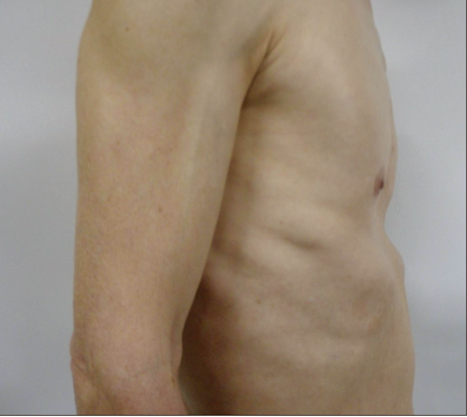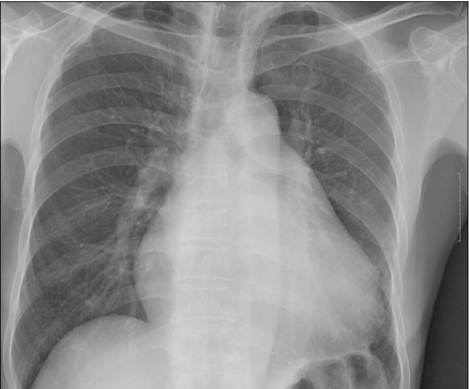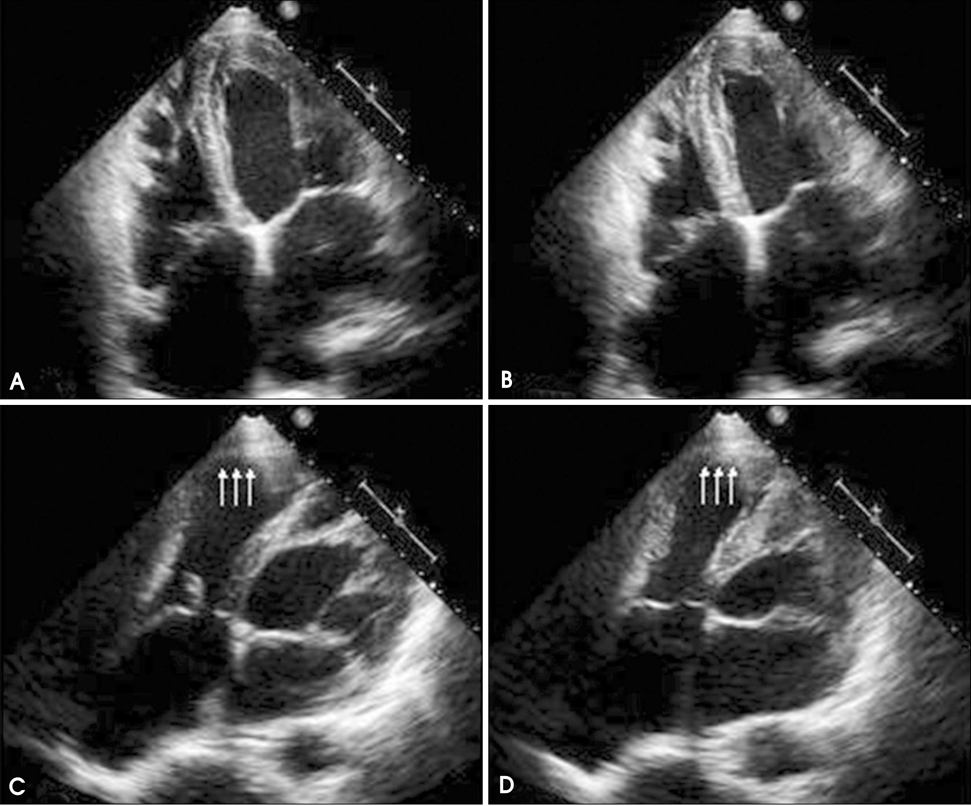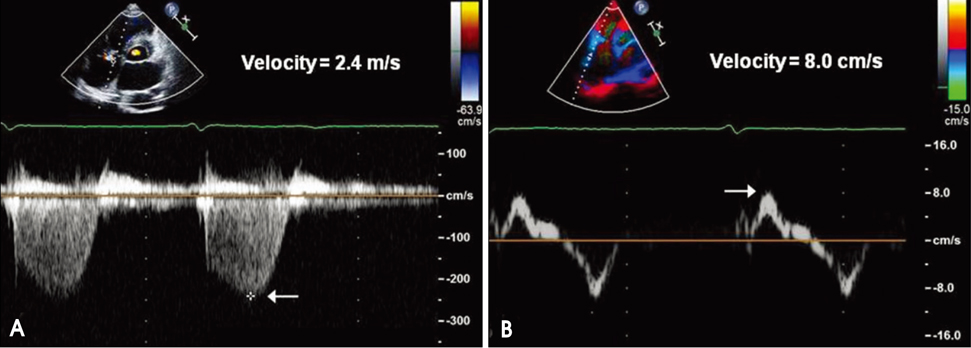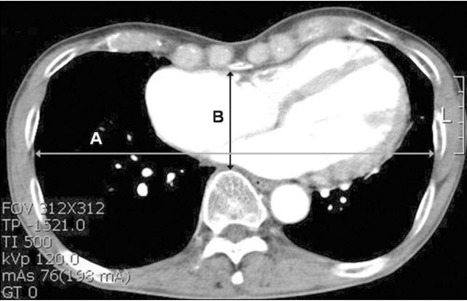J Cardiovasc Ultrasound.
2010 Jun;18(2):62-65. 10.4250/jcu.2010.18.2.62.
A Case of Right Ventricular Dysfunction Caused by Pectus Excavatum
- Affiliations
-
- 1Department of Cardiology, Dong-A University College of Medicine, Busan, Korea. thpark65@dau.ac.kr
- KMID: 2135441
- DOI: http://doi.org/10.4250/jcu.2010.18.2.62
Abstract
- Pectus excavatum compresses the underlying right side of the heart, which might lead to right ventricular dysfunction as illustrated in this case report.
Figure
Reference
-
1. Fonkalsrud EW. Current management of pectus excavatum. World J Surg. 2003. 27:502–508.
Article2. Scherer LR, Arn PH, Dressel DA, Pyeritz RM, Haller JA Jr. Surgical management of children and young adults with Marfan syndrome and pectus excavatum. J Pediatr Surg. 1988. 23:1169–1172.
Article3. Wheeler R, Foote K. Pectus excavatum: studiously ignored in the United Kingdom? Arch Dis Child. 2000. 82:187–188.
Article4. Malek MH, Coburn JW. Strategies for cardiopulmonary exercise testing of pectus excavatum patients. Clinics (Sao Paulo). 2008. 63:245–254.
Article5. Raichura N, Entwisle J, Leverment J, Beardsmore CS. Breath-hold MRI in evaluating patients with pectus excavatum. Br J Radiol. 2001. 74:701–708.
Article6. Koumbourlis AC. Pectus excavatum: pathophysiology and clinical characteristics. Paediatr Respir Rev. 2009. 10:3–6.
Article7. Kelly RE Jr. Pectus excavatum: historical background, clinical picture, preoperative evaluation and criteria for operation. Semin Pediatr Surg. 2008. 17:181–193.
Article8. Mocchegiani R, Badano L, Lestuzzi C, Nicolosi GL, Zanuttini D. Relation of right ventricular morphology and function in pectus excavatum to the severity of the chest wall deformity. Am J Cardiol. 1995. 76:941–946.
Article9. Haller JA Jr, Kramer SS, Lietman SA. Use of CT scans in selection of patients for pectus excavatum surgery: a preliminary report. J Pediatr Surg. 1987. 22:904–906.
Article10. Haddad F, Doyle R, Murphy DJ, Hunt SA. Right ventricular function in cardiovascular disease, part II: pathophysiology, clinical importance, and management of right ventricular failure. Circulation. 2008. 117:1717–1731.
Article11. Shin MS. Right ventricle in echocardiography. J Korean Soc Echocardiogr. 2003. 11:76–80.
Article
- Full Text Links
- Actions
-
Cited
- CITED
-
- Close
- Share
- Similar articles
-
- Cardiac Cachexia Caused by Right Ventricular Outflow Tract Obstruction in a Patient With Severe Pectus Excavatum
- Repair of Recurrent Pectus Excavatum with a Huge Chest Wall Defect in a Patient with a Previous Ravitch and Pectus Bar Repair: A Case Report
- Simultaneous Nuss Operation and Mammoplasty in an Adult Patient with Pectus Excavatum: A case report
- Silastic Molding Method for Pectus Excavatum Correction Using a Polyvinyl Alcohol (Ivalon) Sponge
- Congenital Cystic Adenomatoid Malformation Associated with Pectus Excavatum: 1 case report

